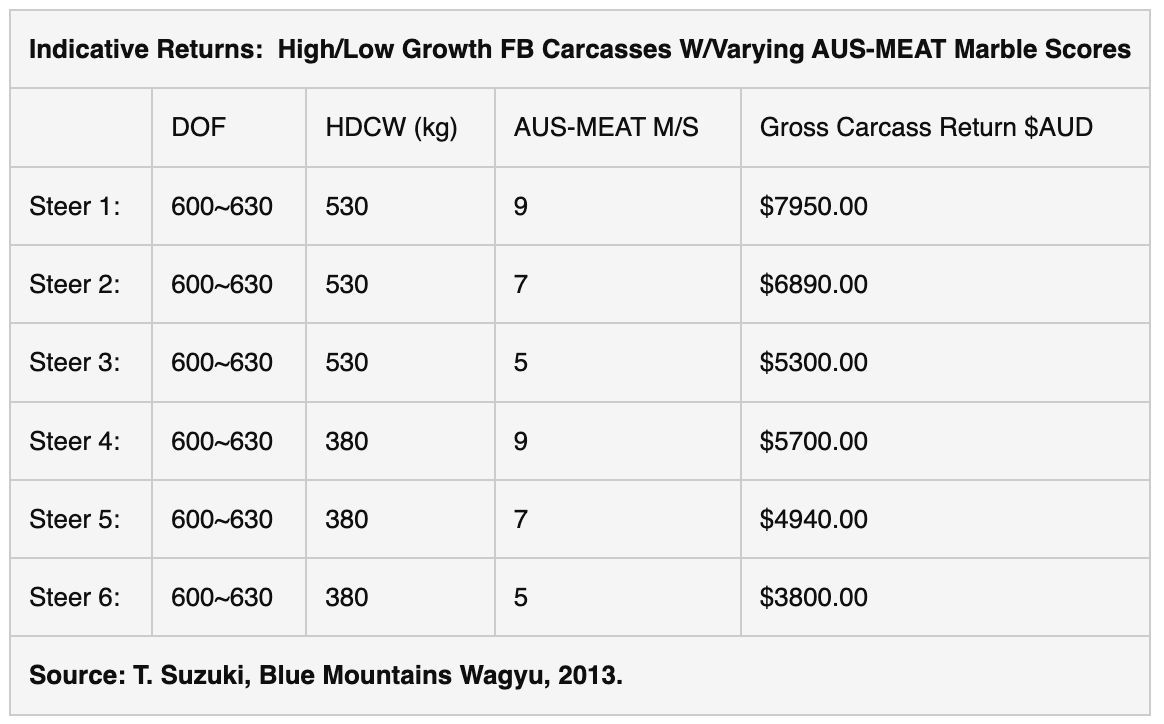The Value of Wagyu Growth
Optimised growth is equally important to profitability for Australian FB feeder producers, who usually sell on a $$-per-kg weight basis to feedlot buyers. A common specification calls for purchase or induction under 15moa at a minimum weight of 250-300kg. However, early FB growth variability is as pronounced as the terminal weight variation in FB carcasses identified above. 200doa FBs commonly vary from about 150kg/lwt to over 200kg, with a likely average around 170kg.
Higher growth weaners may weigh 210kg, with greater ongoing daily gain, while lower 200doa lwt animals frequently also record lower average daily gains (ADG). Most FB feeders will require supplementation from weaning to shipment. Australian FB 200-300 day weights are not significantly different from those recorded in Japan – but Japanese calves are likely to have been supplemented for many months at this point.
Value of Growth - Feeder Producer Considerations
The following table describes the indicative pre-shipping backgrounding or paddock supplementation time required for lower 200doa lwt/ADG weaners compared with representative animals with higher weaning lwt/ ADG. DOF indicates the length of preparation period required. Depending on ration costs, higher growth animals may be supplemented longer for higher induction weights and better profits. No ration cost/shrinkage is calculated, but clearly substantial time (and subsequent ration cost) penalties are accrued by low growth genetics.
Indicative Pre-Shipping
(Click for larger picture).
Value of Growth – Carcass Weight Outcomes
Growth reflected in carcass weight (HSCW) is the second major profitability determinant in Australian fullblood production. Most FB are 900 days-of-age (doa) or more at slaughter, and carcasses commonly vary from about 530kg (liveweight 850~ 900kg) down to less than 350kg (lwt 650~680kg). Given identical preparation and feeding, the variation is largely explained by genetics.
There are no BREEDPLAN 900 day EBVs to enable direct comparison of pedigree genetics at this age, data collection for 600 day EBVs cutting off a 900 days. The Australian Wagyu GEBV summary provides the best clues to higher growth FB bloodlines.
The following table provides indicative economic returns (Australia: Nov. 2013) from representative FB carcasses of varying marble scores and weights after 600~630 days on feed (DOF). Good growth with marbling is more profitable than lower growth with top marbling:
Indicative Returns
(Click for larger picture).
Let’s Talk About Your Wagyu Breeding Plan
We'll Find the Right Wagyu Breeding Solution for You
Call us:


